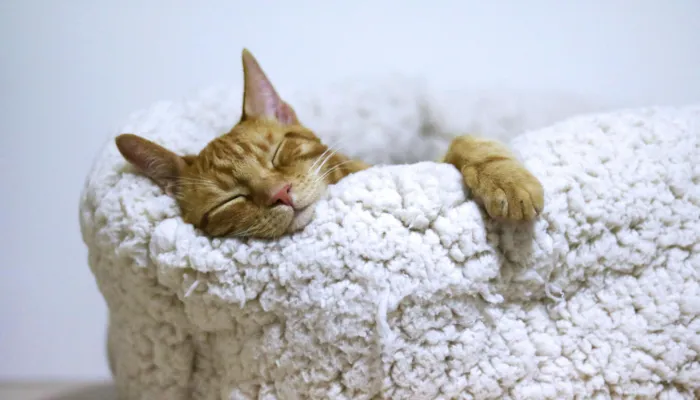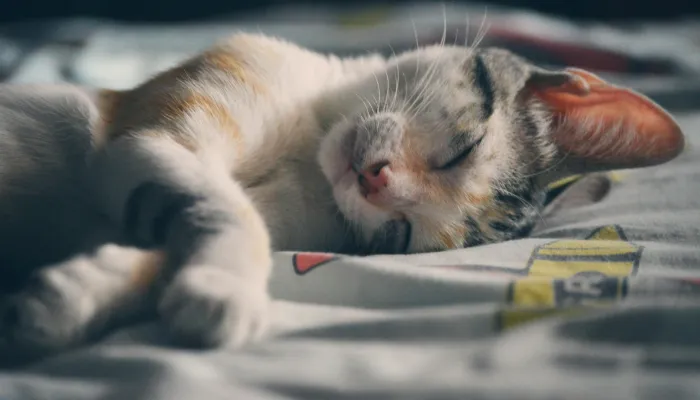Human to cat translator tools have become common for pet parents wanting to connect with their cats. These apps and devices pledge to interpret cat sounds and translate human language into a form that cats would appreciate.
While they are not the best in translations, cat translator is a good source of entertainment which increases the bond between the cat and the owner. This guide will delve into the mechanics behind these tools, their efficacy, and the top recommendations for those ready to try a new way of relating to their pets.

Human to Cat Translator: What Does It Do?
Cats are creatures of wonder, and as a pet owner, I have often pondered what exactly it is that they are trying to communicate to us. A human to cat translator seeks to update the tech industry by offering a new gadget that could potentially help us decode cat communication. So, what’s in it for us? Let’s find out.
How Does It Work?
If Breakthrough and Innovation Technologies is to be believed, this translator serves as a bridge between humans and cats by simulating and analyzing their vocalizations. There are three features that are commonplace among many of the best of the best.
Sound Recognition & Analysis
- Feline speech recognition is integrated using AI algorithms.
- AI organizes the voices into a database based on frequency and tone.
- Attempts to provide context based on the pitch of the cat’s voice.
Human-to-Cat Sound Conversion
- Words in the human languages are translated into accessible “meow” language sounds.
- Replaces human speech with cat-friendly AI created or saved meows.
- Feline-friendly pitch and tone are blended for better reception.
Capturing the Cat’s Voice.
- Some cat translator app are capable of letting users record their cat’s emotions for later analysis.
- Allows assessment of the cat’s state of emotion, be it joyful, hungry, or even depressed.
- Some smart pet devices allow for easy interaction with advanced devices.
Types of Human to Cat Translators
There are various kinds of talking gadgets with different capabilities to connect with your cat. Here are examples:
| Type | Description | Best For |
|---|---|---|
| Mobile Apps | Use AI to turn human speech to feline speech. | Regular, light entertainment. |
| Wearable Devices | Small devices that focus and break down cat sounds instantly. | Serious cat lovers, enhanced pet engagement. |
| Interactive Smart Toys | AI-based toys that can “listen” to cat’s meows and offer appropriate responses. | For keeping your pet cat busy and active. |
Human to cat translators help people to engage with their pets, enhancing communication between owner and pet. Those devices will not fully help, but will definitely assist understanding your furry friend better. They should always be used alongside a keen eye on how your cat behaves and moves, and you will have an all-around pet communication tool!

Do Human to Cat Translators Really Work?
Imagine being able to speak to your kitty. Every cat lover dreams of this scenario where they can converse with their feline friend. cat translator cat to human apps claim to do this, but the question remains: do these apps serve their purpose, or are they just another trick? Let’s delve deeper and understand the science behind them and whether they actually work.
Understanding Cat Communication
Cats convey information in numerous forms, but they can be categorized into three primary groups:
- Vocal – Purrs, meows, chirps, hisses, and other noises.
- Visual – Movements of the tail, ears, and eyes.
- Physical Actions – Rubbing, playful fighting, and kneading.
As you may notice, cat communication is important non-verbal. For this reason, translating human language into cat poses a great problem. Tools that exist to do so strive to provide this service, but I think the accuracy is not there.
How Human to Cat Translator Apps Work
Most human to cat translators function by:
- Dissecting Human Language – Taking note of the pitch and tone.
- Sound Recognition – Trying to use ‘meow’ instead of ‘words’.
- Replay Cat Sounds – Using the existing sound bank to play the noise.
Some claim to be more advanced by incorporating AI and machine learning so as to be precise in their work, but still fail to comprehend feline feelings.
Difficulties of Cat to Human Translators
Although these tools can be amusing, they have a variety of issues:
| Limitation | Explanation |
|---|---|
| Lack of True Understanding | Cats do not have a direct language like humans |
| Context Matters | The same meow can mean different things depending on the situation |
| Limited Sound Database | Apps use pre-recorded sounds, not real-time communication |
| Individual Cat Variations | Each cat has a unique way of communicating |
What Experts Have to Say?
In general, animal behaviorists and vets are on the same page that:
- Cats are incapable of understanding language on a human level.
- A few noises can grab a cat’s attention, although they are not particularly a means of sending a message.
- Disconnecting a feline from such apps tends to hinder the cat’s ability to communicate.
Do They Work?
Humans can make use of cat translators which can be fun and attractive, but put no faith on their accuracy for effective communication. Instead, appreciate and bond with your feline friend through understanding your cat’s inherently emitted body language accompanied by vocal details.
As appealing as it is, technology comes with its limitations, and until further improvements and applications are made, nothing can replace the connection between an owner and their cat. Genuinely talking, waiting for them to respond, and treating them with affection are the most effective ways to socialize with your cat.

Best Human to Cat Translator Apps and Devices
More apps and devices are being developed to assist pet owners in translating human speech into a cat-friendlier sound. Even though tools and devices are coming out rapidly, most still aren’t perfect, but they should offer a fun experience with your feline friend. In this article, we look at some of the best tools to help translate your speech into cat sounds.
Top Human to Cat Translator Apps
Let us look at the most preferred apps with which people try to communicate with their felines.
1. MeowTalk
- Platform: iOS and Android
- Pros:
- Supports multiple cat voice profiles, enables personalization for each cat in the household.
- Community members contribute to the sound analysis for more accuracy.
- Cons:
- To use the app to it fullest capacity, the internet is a requirement.
- The free version has very few translations provided.
- Features:
- Provides AI enabled meow analysis.
- Have cat profiles created on AI analysis and tailor how to better accessorize.
2. Human to Cat Translator
- Platform: iOS and Android
- Pros:
- No internet connection is required and can be used anywhere.
- Commands that are frequent can easily be set up for kids to use.
- Cons:
- Lacks automated customization or AI assistance.
- User Restricted.
- Features:
- Speaks into a microphone and human speech is translated.
- Simple interface, where a host of cat meows are available in the sound bank.
3. Cat Language Translator
- Platform: Android
- Features:
- Records and analyzes cat meows
- Translates human speech into feline tones
- Offers fun interactive features
- Pros:
- Helps pet owners understand common meows
- Engaging for cat lovers
- Cons:
- Not scientifically backed
- May not work for all cats
Best Human to Cat Translator Devices
For those seeking for cat translator cat to human to interact with their cats, various devices have been developed to both analyze and translate cat sounds.
1. Catterbox Collar
- How It Works:
- An AI-powered collar that translates cat sounds into human words
- Pros:
- Provides real time audio feedback
- Allows owners to better understand their cat’s mood
- Cons:
- Not widely available
- More expensive than mobile apps
2. AI Pet Translators
- How It Works:
- Deep learning is implemented to track patterns in cat sounds.
- Pros:
- Other mobile apps will potentially be less accurate.
- AI can adapt and improve with greater usage.
- Cons:
- Remains in research and development phase.
- The product is yet to be developed for sale.
Human to cat translator devices are so fascinating and enjoyable to use. They may not translate perfectly, but these tools are extremely beneficial to strengthen your bond with your cat. Working to understand your pet even a little better works wonders, even if it means undergoing some advanced AI options.
Tips to Use a Human to Cat Translator Effectively
Maximizing the potential of a human to cat translator requires skill and some level of understanding of how the system works. For example, a translator does not simply make sounds and wait for a response. Rather, the translator has to pay attention to the user’s behavior and movements in order for it to work more efficiently. Let’s discuss the best strategies for cat language translator cat to human use.
1. Choose the Right App or Device
Ensuring that you have the correct app and/or device is pivotal in using a human to cat translator. Apps such as MeowTalk and human to cat translator app go above and beyond to satisfy customer needs. There are apps that seek to replicate cat sounds while other apps try to vocalize cat calls. Make sure the app you choose is rated highly by users.
2. Properly Setting Up The Translator
Allowing the translator to translate properly requires the user to first. Make sure you:
- Adjust slider permissions for microphone on the app (if the app is listening to you)
- Set sound levels that the cat resonates to
- Calmly and clearly articulate and phrase sentences into the translator machine
3. Look at Your Cat While Speaking To The Translator
While speaking to the translator, keep an eye on the reaction your feline gives you.
Signs that your CAT is engaged include:
- Ears perked up
- Tail flicking in curiosity
- Slow blinking or approaching you
If your feline pet looks startled or overlooks the sound, it is best to change the tone or phrase used.
4. Use the Translator in the Right Context
Cats as creatures of nature do not expect to communicate in the same tone or frequency. Ensure to use the cat translator cat to human in these conditions:
- Your cat seems calm and willing to listen to you.
- You engage in active play with the pet to build a rapport.
- You are giving a treat or something as a prize to the pet.
Avoid it when your cat looks agitated, drowsy, or chewing, which can have an adverse impact.
5. Combine Verbal and Non-Verbal Communication
The communicator alone will not serve as a replacement for interaction with the pet. Expand our means of talking to each other by:
- Making body movements (for instance, pointing to the toy a child will want to play with)
- Making some sounds while doing particular movements (for example, calling them and tapping on your lap)
- Giving them bounties for good behavior or lovely affection.
6. Test Different Phrases and Sounds
Every cat is unique along with a unique way of responding to their surroundings. Try out various phrases in the translator like:
- ”Hello” in cat sounds, does it approach you?
- “Play” or “Food” sounds – Do you see an excitement response from your cat?
- Hissing or other warning sounds – Does your cat appear disturbed or try to walk away?
If your cat is not reacting to some sounds, consider shifting your approach or changing your voice.
7. Stay Patient and Follow Through
As with any method of training or engagement, the use of a translator calls for some degree of patience. It’s really simple – if your cat wouldn’t react as per your expectations, continue trying over a period.
Common Mistakes to Avoid
- Wearing the device too often – There is a limit to how many new noises one cat can handle without becoming desensitized
- Focusing only on the sounds – By simply recording a cat’s meows, its communication is lost with a single audio video mix.
- Expecting immediate responses – One sentence is not enough to put some variety in some cat’s vocabulary.
Using a human to cat translator will make it fun trying to get close to your pet. Still, be careful to use it together with real life interaction, good praise, and most importantly, do not lose your patience. This technique along with understanding your cat’s way of communication will surely deepen the relationship between you and your cat.
Conclusion
Human to cat translator tools provide an amusing channel through which cat enthusiasts can interact with their companions. Cats cannot relay messages in a sophisticated fashion, but these tools can assist cat owners in understanding common cat sounds and vocal responses.
Using cat translator cat to human tools together with observing other crucial elements such as cat body language can enable pet owners to strengthen their bond with their cats. While technology has its own constraints, it is impossible to replace the fundamental bond created by love, patience, and regular bonding time with your cat.
